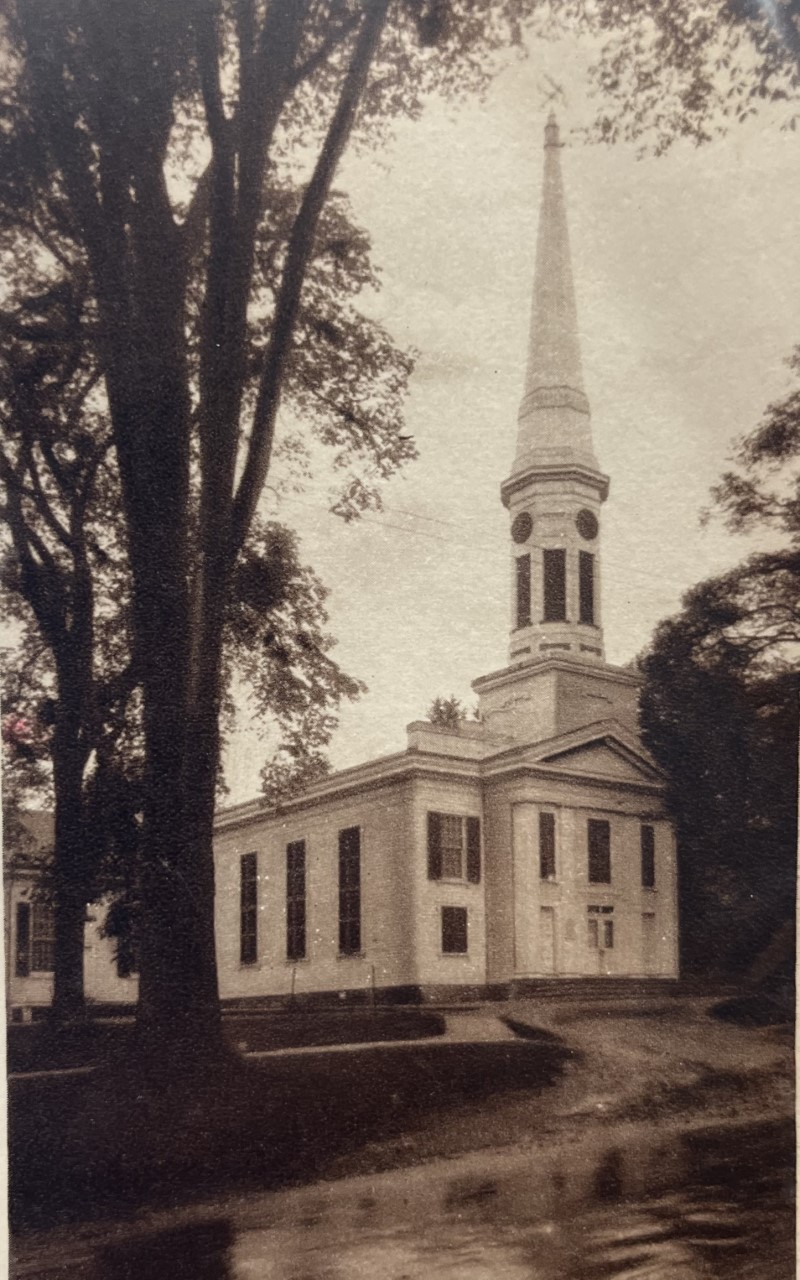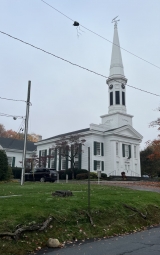23 Park St.
The history of New Canaan is tightly entwined with the history of the Congregational Church. By 1731 enough members in the New Canaan area were tired of traveling to either Norwalk or Stamford to attend services on Sunday, and they petitioned the colonial government to form their own parish in the area. Their request was approved and the Society of Canaan Parish was established, which covered just about the same area that New Canaan does today. The entire membership of the church was only twenty-seven people. With the church established, it began to collect taxes from both members and nonmembers living in the parish. This money went towards the minister’s salary and other church related needs. The money was also used for secular needs such as schools and road maintenance. Despite the church’s quasi-governmental role, the parish was still not its own town. One side of the parish paid taxes to Stamford while the other two thirds paid taxes to Norwalk.
In 1732, members of the church decided that they needed to build their first church, but they could not agree where. There was no downtown area at this point and homes were spread throughout the parish so there was no easy solution. Eventually the problem was pushed all the way up to the colonial government of Connecticut. They decided that the church would be built on Park Street, but much closer to Elm Street, probably south of Seminary Street. It was a very simple structure that measured 30 ft by 30 ft. It was unpainted, unheated, and the pews did not have backs. Later a separate structure was built so that families who traveled from far away had a place to eat their lunch and warm themselves in the winter time. The church’s burial ground was God’s Acre and where the Wayside Cross now stands there were the stocks and the whipping post.
Despite additions, the congregation had outgrown the first church. In 1750, work began on the second church. By 1752 services were being held in this new building, but it was still not finished. In 1787 the gallery was finished and in 1797 the belfry was finished. Despite these two additions the church was still very simple. It measured 50 ft by 40 ft and was located between Seminary Street and St. John’s Place. It was still unpainted, unadorned, and the pews still did not have backs. During the Revolutionary War, the members of the Congregational Church had a patriotic bent. One reverend was dismissed because he was seen as a Loyalist and was also too liberal with the sacramental wine. Finally in 1801, New Canaan was incorporated as its own town and took over the secular duties from the church. The Congregational Church was still involved with politics, however, as the church served as the location of all town hall meetings for the next twenty four years.
In 1841 construction on the current church began. Donations towards the building fund are reported as being slow until the second church was struck by lightning in 1842. All the timber was cut from local trees that were all donated by local residents. The church was dedicated on June 13, 1843 and was built at the cost of $6,600. It measures 60 ft by 43 ft and stands 113 feet tall. A bell was also installed, but in 1904 it was replaced. The old bell was melted down and cast into small dinner bells that were sold to members of the congregation in order to raise funds for the current bell that hangs in the steeple. Some of these dinner bells are now in the collection of the New Canaan Museum & Historical Society.
Surprisingly the clock in the steeple was a later addition. In 1902, funds were raised to put a clock somewhere in the downtown area, but a suitable location was never found. So the $350 raised was used to buy and install a Seth Thomas clock in the steeple of the church. Finally in 1984, it was discovered that the top section of the steeple was leaning and needed to be immediately removed. Lazlo Papp, local resident and architect, made the initial discovery and when it was measured the steeple was found to be leaning nine inches off center. Later damage was also found in the lower section of the steeple, which was also removed. With a price tag of $250,000, a replica of the old steeple was built on the front lawn and lifted into place in June, 1986.
“New Canaan Now & Then” is presented in partnership with the New Canaan Museum & Historical Society.




This puts the history in even a broader context, when Congregationalism was the official religion of the Connecticut colony, and shows how long it took us separate church and state — let alone allow other religious practices…. https://teachitct.org/lessons/church-state-in-the-land-of-steady-habits/.
Also Calvanism was a prevalent tenet of the lengthy sermons and church meetings through the 1800s. As when one of the more famous people to be born and raised in New Canaan, Anthony Comstock and his family were a member of that church. It would be interesting to see a chronicle of the ministers, sermons, forms and styles of church services from the 1700s to the present day association with the UCC.